The Lonely Launchpads and Rusted Rockets of America’s Abandoned Space Facilities
See arresting photos of once-critical space travel facilities left to rot.
Launch Pad and Gantry with Hermes A-1 Rocket, V2 Launch Complex 33 White Sands Missile Range, New Mexico 2006. (All Photos: Roland Miller)
“We choose to go to the moon. We choose to go to the moon in this decade and do the other things, not because they are easy, but because they are hard…” On September 12, 1962, President Kennedy proclaimed America’s intention to send a man to the moon by the end of the 1960s. The speech was a call to action, and a persuasive argument for space exploration.
It also foreshadowed the immense effort and cost involved in beginning a space race with the Soviet Union, a high-wire act that would culminate some seven years later with Neil Armstrong’s first steps on the surface of the Moon. Yet today, some of the remnants of the formative years of space travel–the launch towers, tunnels, and control rooms–lie dormant, abandoned, repurposed or in some cases, completely destroyed.
For over 25 years, photographer Roland Miller has sought to document these facilities that were once essential to achieving Kennedy’s vision. Compiled into a book released in March 2016 called Abandoned in Place–named after the sign stenciled on deserted structures–Miller’s arresting photographs are a testament to the early days of American space exploration. They allow us to glimpse part of what went into achieving what Kennedy called “the most hazardous and dangerous and greatest adventure on which man has ever embarked.”

Bolts, Atlas Launch Complex 13 Cape Canaveral Air Force Station, Florida 1991.

Stairway, Navaho Launch Complex 9 Cape Canaveral Air Force Station, Florida 1990.

Pressure Gauge Panel, Apollo Saturn V F1 Engine Test Stand Boeing Facility, Santa Susana Field Laboratory, California 1998. The metal sheets showing traces of Cyrillic writing indicates they were made overseas.

Saturn V Rocket Moving to the Saturn V Center, with the Vehicle Assembly Building in the Background, NASA Kennedy Space Center, Florida 1996.
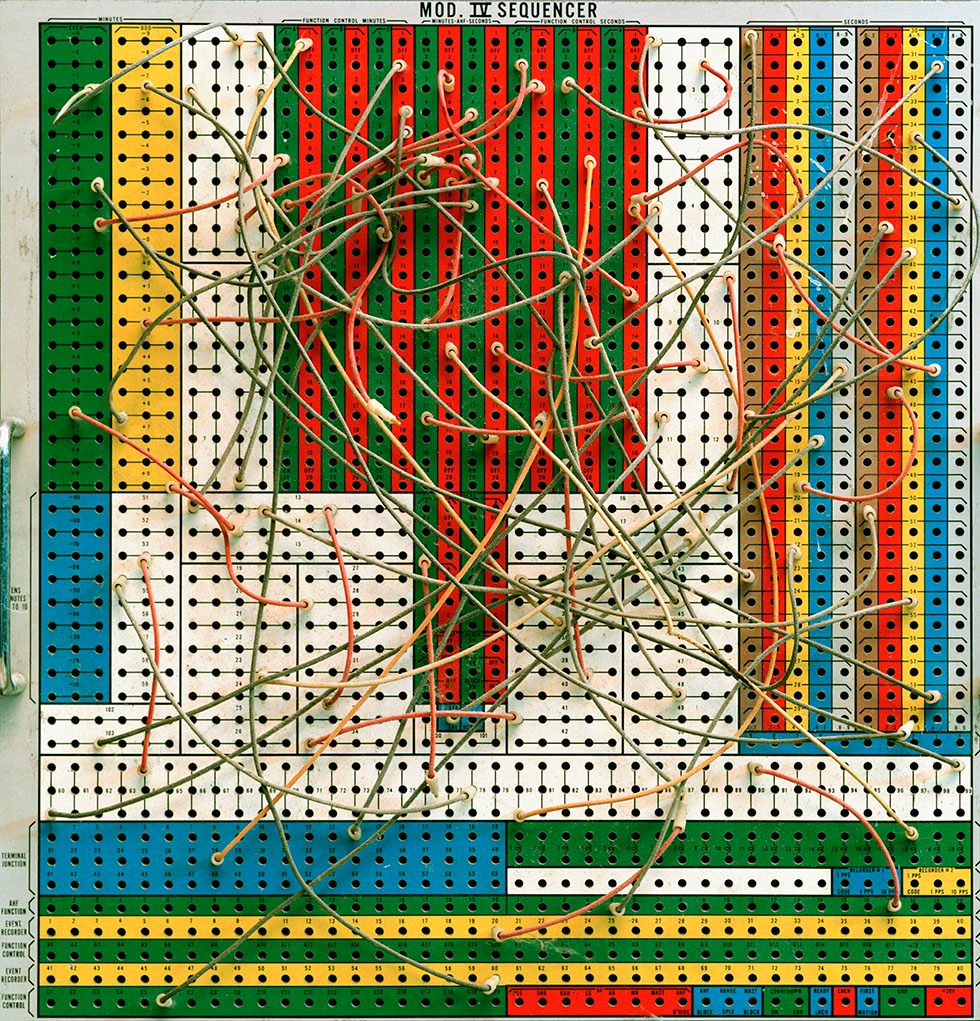
Plug Board, Redstone Launch Complex 26 Blockhouse Cape Canaveral Air Force Station, Florida 2000.
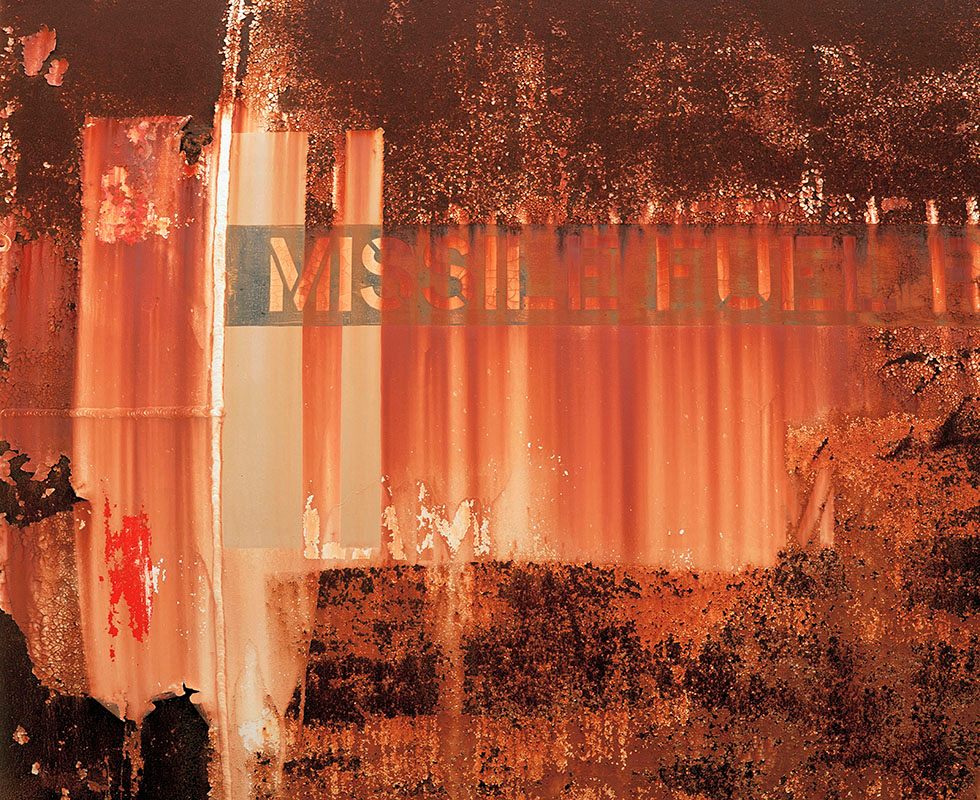
MISSILE FUEL, Atlas Launch Complex 13 Cape Canaveral Air Force Station, Florida 1992.
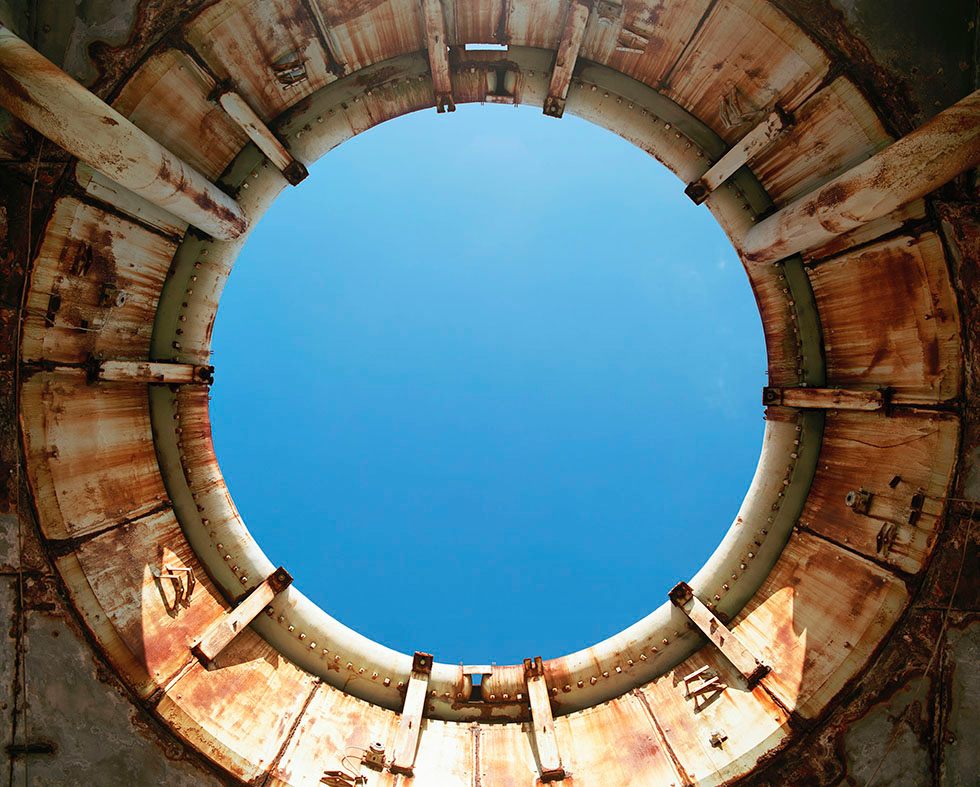
Launch Ring, Launch Complex 34 Apollo Saturn Cape Canaveral Air Force Station, Florida 1990.
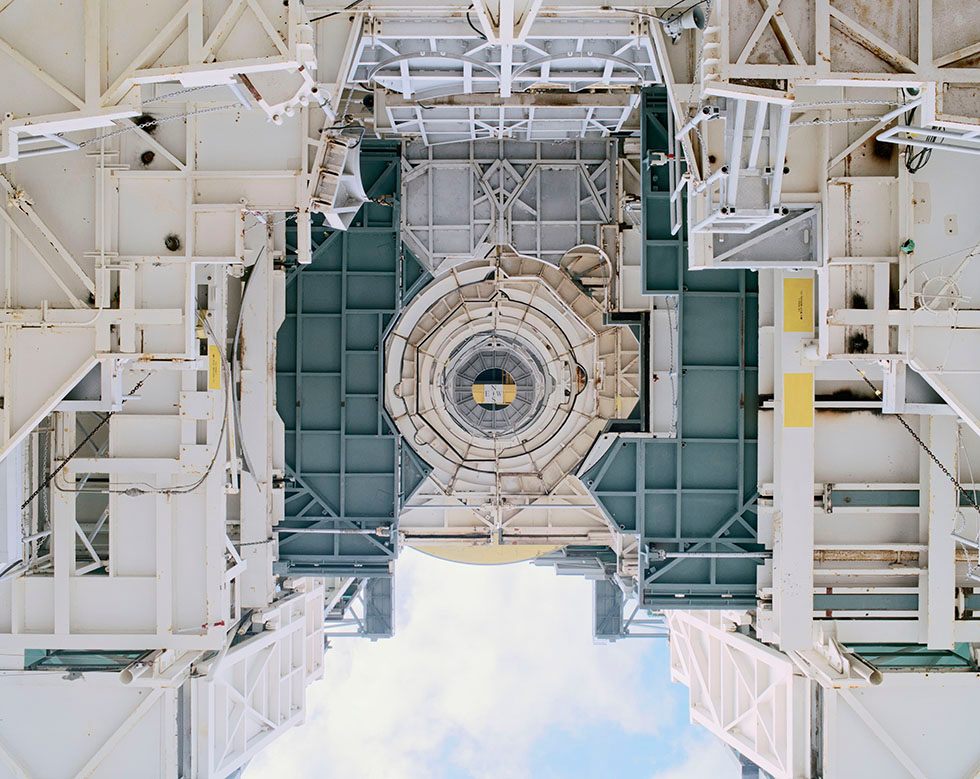
Mobile Service Tower Platforms, Atlas Launch Complex 36B Cape Canaveral Air Force Station, Florida 2005.
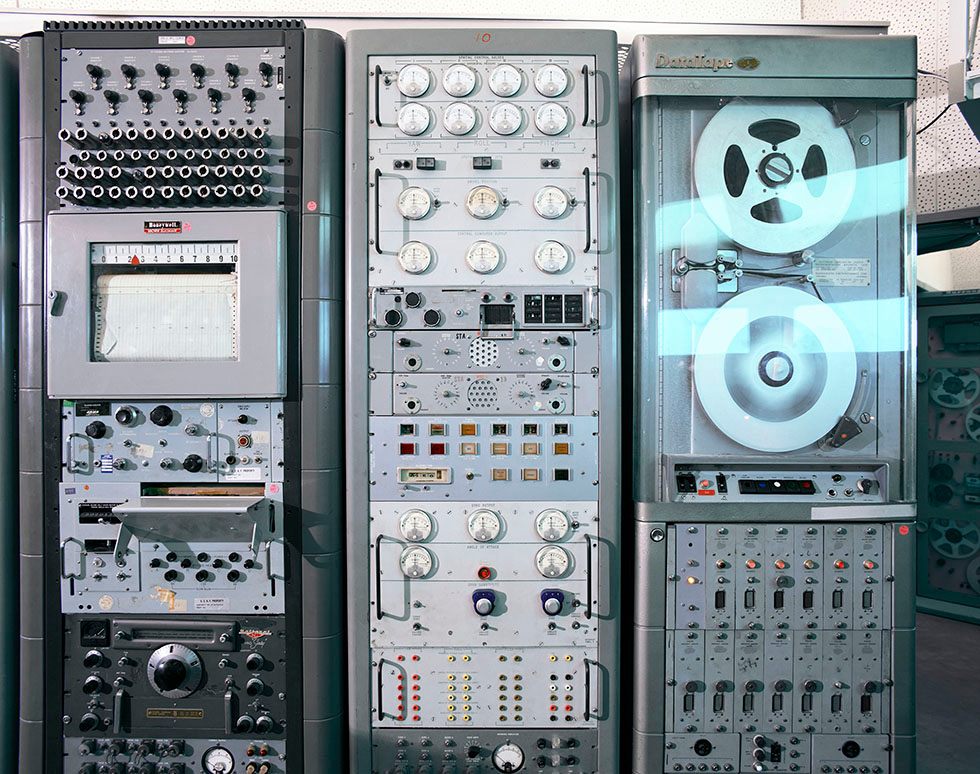
Telemetry Receivers, Strip Chart Recorders, and Tape Recorders, Redstone Launch Complex 26 Blockhouse Cape Canaveral Air Force Station, Florida 2000.

Launch Control Room, Titan II ICBM Silo 395-C Vandenberg Air Force Base, California 1995.

Gantry, Launch Umbilical Tower, and Ramp, Atlas Launch Complex 13 Cape Canaveral Air Force Station, Florida 1992.
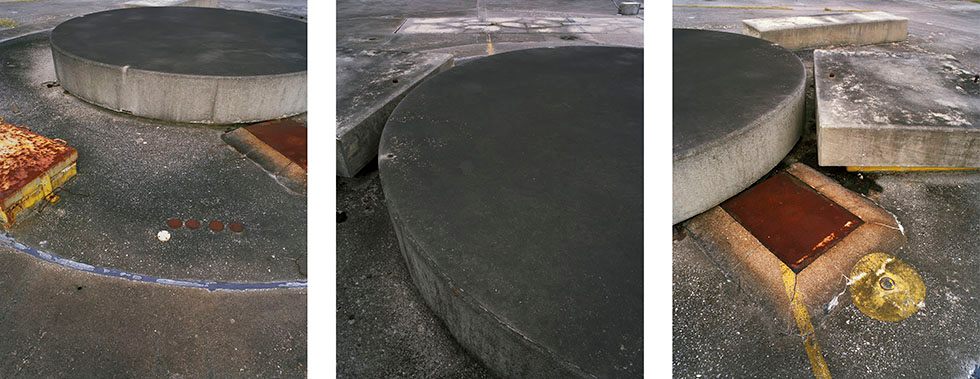
Minuteman Missile Silo Triptych, Space Shuttle Challenger Burial Site, Launch Complex 31 Cape Canaveral Air Force Station, Florida 2005.

Sunrise, Atlas Launch Complex 13 Cape Canaveral Air Force Station, Florida 1992.

Apollo 1 Fire Commemorative Blockhouse Service, Launch Complex 34 Apollo Saturn Cape Canaveral Air Force Station, Florida January 27, 1994.

Atlas Rocket, Air Force Space and Missile Museum Cape Canaveral Air Force Station, Florida 1993.

The cover of Roland Miller’s Abandoned in Place: Preserving America’s Space History, which will be released by the University of New Mexico Press in March 2016.
















Follow us on Twitter to get the latest on the world's hidden wonders.
Like us on Facebook to get the latest on the world's hidden wonders.
Follow us on Twitter Like us on Facebook